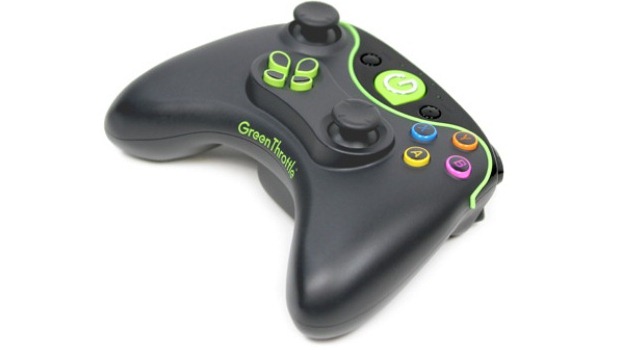I like mobile games: they make great time-passers on the commute from work. Being as I ride an hour and a half home every night, I have time to play games more involved more than my usual simple affairs, games like Puzzle and Dragons and Song Pop. Unfortunately, when it comes to more complex efforts, I prefer to play them with a controller on a large screen, making mobile play less than desirable. The Atlas controller, from Green Throttle Games, seemed like a great remedy to part of the problem. It partially solves the problem, though unfortunate circumstances hold it back from loftier designs.
The general design of the controller is favorable. The Atlas has the familiar feel and shape of the Xbox controller, even going as far as having the same button layout and markings. It also has a nice, flat finish to the top. Batteries add a nice weight to the controller as well. Functionally, the triggers, particularly the L1 and R1, feel rather cheap and are quite loud. There is minimal lag between pressing a button and seeing the action on screen, which is a pleasant plus. Despite the satin finish to the analog sticks, my thumbs slipped more than I would have liked and I ended up using the D-Pad most of the time. It was a gradual slip, but it was more noticeable than when I play console games.
Connecting the controller to my HTC Evo 3D V was a simple process. It synced like any other headset or stereo I have connected via bluetooth and worked great. Downloading the app to play the games and syncing the controller took all of a couple minutes, and then I was playing.
I mentioned 9 Lives: Casey and Sphynx in this week’s Wandering Wednesday, but to elaborate a tad, the game felt much better with the Atlas and playing on my big screen TV. At one point, on my phone I just couldn’t play anymore before the game zoomed out and made me feel like I was playing with specks on my screen. The Atlas made platforming easier with actual, physical controls, too. It was nice not worrying about my finger slipping off the touch screen analog control.
Coral Combat actually got the most play time, though. Anyone my age remembers the classic Space Invaders, so it was fun playing an oceanic rendition. Better yet was watching my oldest son, nine, play the game and get into it. It’s a free game, so it was a major bonus when browsing the selection of games.
Despite the few minor complaints about the controller, it is a neat piece of hardware that made me genuinely more interested in mobile games. However, as of this review, there are only a small handful of games with support for the controller. Less than a dozen, in fact. There are more coming, most notably Sonic the Hedgehog 4, but the lack of games is unfortunate.
Some Android games simply feel better with the Atlas controller in hand and viewed on a big TV. For these budget games, which are usually less expensive than other digital offerings on consoles, investing in the Atlas could be beneficial. But with the lack of software support as of now, it’s hard to recommend as a must-own. Down the road, as more titles are added, it may be something to keep an eye on for people like me who just aren’t crazy about playing on a cramped screen with touch controls.
This review was written based on material received from the publisher. For more on our review policies, please read here.


